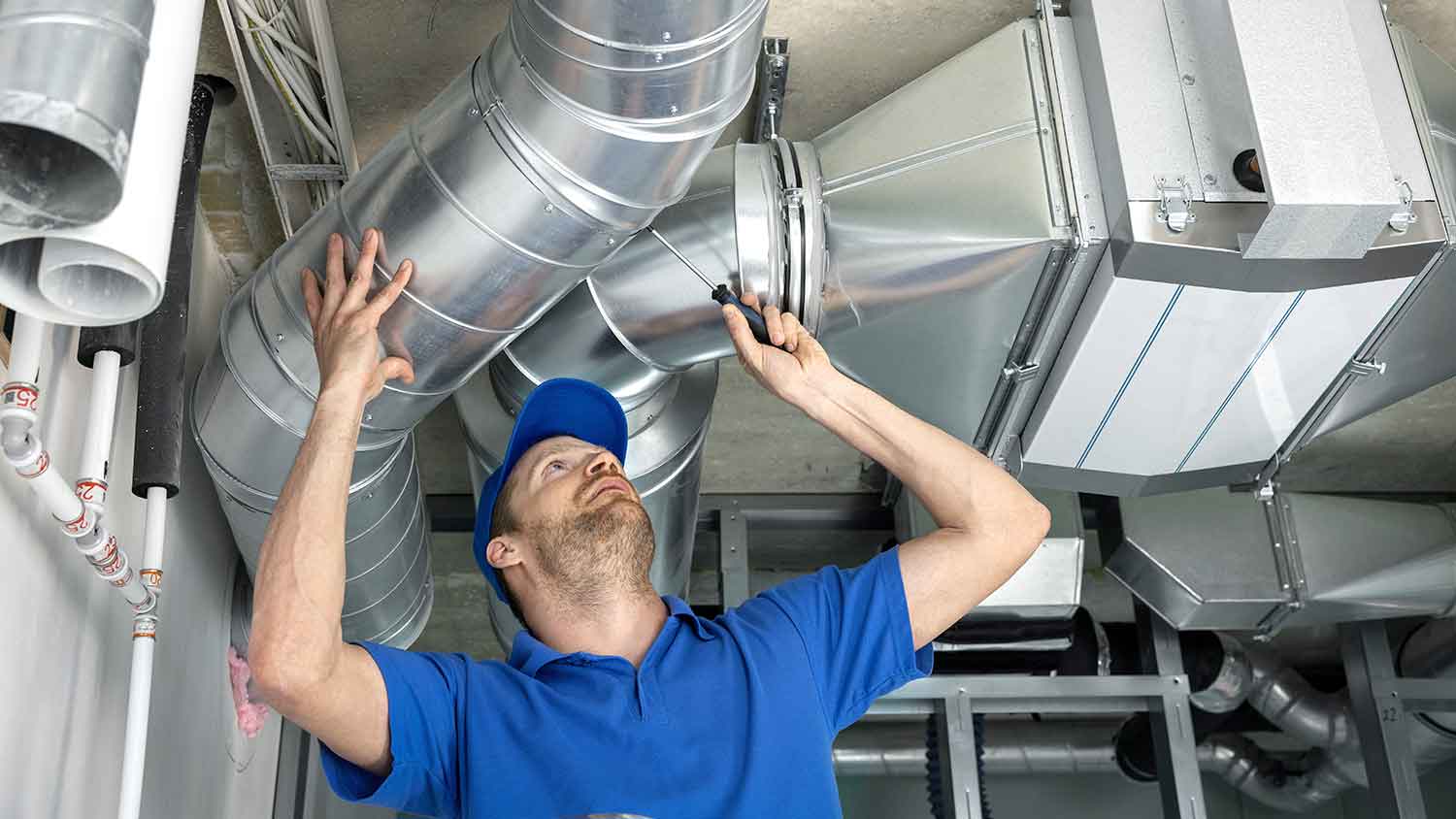
What you’ll pay in Columbus, OH, for furnace repairs depends on many factors. Here’s a breakdown of what can go wrong and the cost to fix those issues.
Don’t let sneaky leaks blow past you


Gas pressure test inspections check your gas line’s condition.
Dropping pressure indicates leaks or other gas line issues.
Inspections should take place before connecting a line to a fuel source.
Hydraulic and pneumatic are the main types of gas pressure test inspections.
Cooking dinner, enjoying a hot shower, and keeping warm on cold winter days—these are all times you’ll be thankful to have efficient gas lines if you have them. To keep you and your home safe and meet your local laws and codes for gas systems, it’s important to have your gas lines inspected regularly with gas pressure tests. Learn more about gas pressure test inspections, the issues they can reveal, and the steps professional inspectors can take to perform them.
Gas pressure test inspections are a process used to ensure the condition and integrity of a gas line. Certified professionals, such as HVAC professionals, employ pressure on the gas line to ensure that the pipes, joints, fittings, and other important components are functioning properly.
These gas pressure tests are generally performed before the line is hooked up to a gas source with the intention of eliminating the risk of gas leaks and piping system explosions beforehand. They ensure your gas pressure system’s safety and reliability and that it meets any relevant local standards. If the plumber or HVAC worker finds an issue, you’ll have to start looking at line repair or replacement costs.

There are several testing methods for gas pressure, but the two main categories are hydraulic and pneumatic.
A hydraulic gas pressure test, also called a hydrostatic test, measures the strength of a system and checks for leaks by filling the system with fluid, which is generally plain or dyed water. Then, professionals apply pressure to the gas line, shut off the supply, and look for pressure loss.
Pneumatic tests work similarly to hydraulic tests, but they use gas instead of fluid. Professionals generally use air, nitrogen, or helium to pressure a gas line to mimic high pressure at the system’s maximum capacity.
When you hire a professional HVAC technician near you to perform a gas pressure test inspection, they will start with a complete walkthrough of the line or system before the test. They expose and assess all joints in the system and isolate parts of the system that aren’t included in the test.
The main part of the inspection involves monitoring the system during the pressure test and ensuring that it maintains the PSI (pounds per square inch) standard over a specified period according to local law and code, which can range from 10 minutes to 24 hours. The exact PSI requirements depend on the type of line being inspected and the size of your system.
Your gas pressure test inspector will also complete the following tasks in preparation for and throughout the inspection:
Verify the test pressure standards in your home’s location
Bleed the system’s air pockets and closing vents
Calibrate gauges
Factor in environmental conditions like low or high weather temperatures
Check all joints and connections for leaks and drain pressure for required repairs
After a gas pressure inspection test, you can rest assured that your gas lines are functioning properly, any repairs have been identified, and that your family is safe and sound with a healthy gas system.
From average costs to expert advice, get all the answers you need to get your job done.

What you’ll pay in Columbus, OH, for furnace repairs depends on many factors. Here’s a breakdown of what can go wrong and the cost to fix those issues.

The cost of boiler repair depends on the specific issue. Read our expert guide, which breaks down boiler service costs so you can budget accordingly.

Discover the true duct replacement cost for your home. Learn about average prices, key cost factors, and tips to save on your ductwork replacement project.

If your furnace is making loud noises, it could be the first sign something is failing. This guide will go over some of your furnace’s most noisy issues.
Furnace trouble can be frustrating, so learning the telltale signs of a failing furnace is important. Recognize the following red flags for a malfunctioning furnace.

Whether you’re replacing an old heater or upgrading to a new system, it helps to understand how to remove a baseboard heater. Get step-by-step instructions.